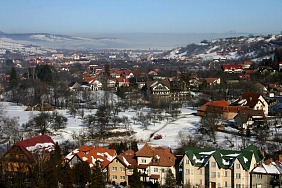Designing a Home for Digital Nomads: The Pros and Cons of Digital Nomad Architecture
Digital nomad architecture is an important element of the lifestyle of digital nomads—those who are able to work remotely, often while traveling. A well-designed digital nomad home takes into account the challenges of living and working in multiple locations, as well as the need to stay productive and connected. In this article, we'll explore the pros and cons of digital nomad architecture, and provide tips on how to design a space that’s comfortable and conducive to productivity.
The Pros of Digital Nomad Architecture
There are many benefits to designing a home specifically for digital nomads. One of the most obvious is the flexibility it provides. By creating a space that can easily be adapted to different locations and climates, digital nomads can enjoy more freedom to move around and explore new places.
Digital nomad architecture also makes it easier to stay productive. For example, if you need to work from home, having a designated workspace can help you stay focused and productive. It also makes it easier to stay organized and on top of your work.
Finally, digital nomad architecture allows digital nomads to be comfortable wherever they are. By designing a space that’s specifically tailored to their needs, digital nomads can enjoy the same level of comfort and convenience regardless of where they are in the world.
The Cons of Digital Nomad Architecture
While there are many benefits to digital nomad architecture, there are also some potential drawbacks. One of the biggest is the cost. Designing a home specifically for digital nomads can be expensive, and it’s not always easy to find a place to rent that meets all the requirements.
It’s also important to consider legal considerations when designing a home for digital nomads. Depending on the country, there may be restrictions on the types of work and activities that can be conducted in certain homes, so it’s important to research local laws and regulations before setting up a digital nomad home.
Finally, designing a digital nomad home can be time-consuming and challenging. It’s important to take the time to think about your needs and make sure the home is designed in a way that’s comfortable and conducive to productivity.
Tips for Designing a Home for Digital Nomads
Designing a home for digital nomads doesn’t have to be a daunting task. Here are a few tips to help you get started:
Start by considering your needs. Think about what you need to be productive and comfortable, and make sure the home is designed to meet those needs.
Research local laws and regulations. Make sure you understand any restrictions that apply to the type of work and activities you’ll be doing in your home.
Choose the right location. Location is key when it comes to digital nomad architecture. Look for a place that’s conveniently located, has good access to public transportation, and is affordable.
Make use of multi-use furniture. Invest in furniture that can be used for multiple purposes, such as a couch that can also double as a bed. This will help you save space and money.
Think about the size of the space. If you plan on traveling with your home, make sure it’s small enough to be easily transported.
Consider comfort. Make sure the home is comfortable and inviting, and that it has all the amenities you need to stay productive and connected.
Conclusion
Digital nomad architecture is an important element of the digital nomad lifestyle. By taking the time to design a home specifically for digital nomads, they can enjoy more freedom and flexibility, stay productive, and remain comfortable no matter where they are in the world.














